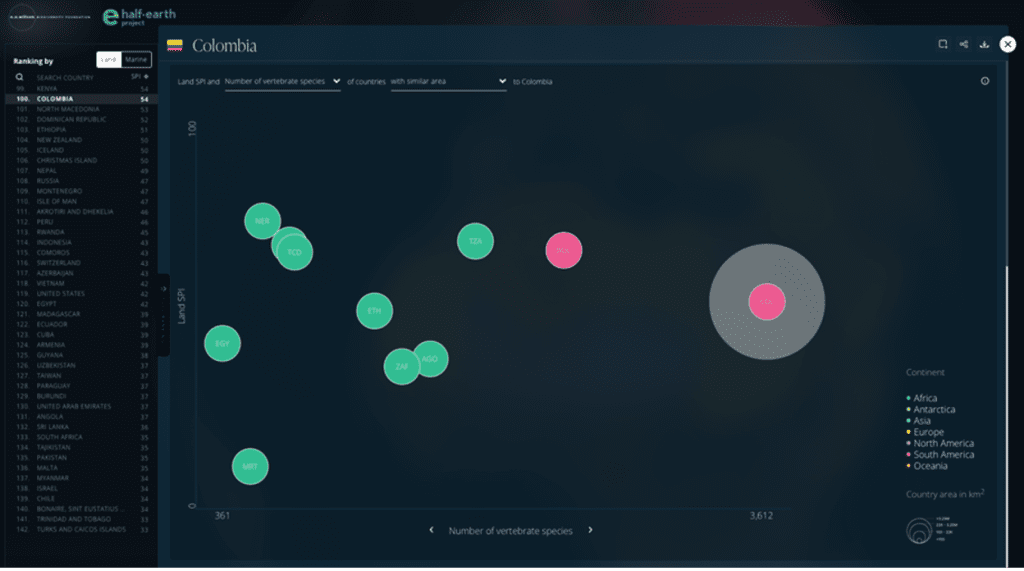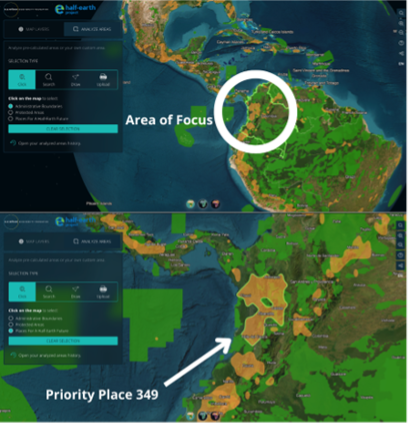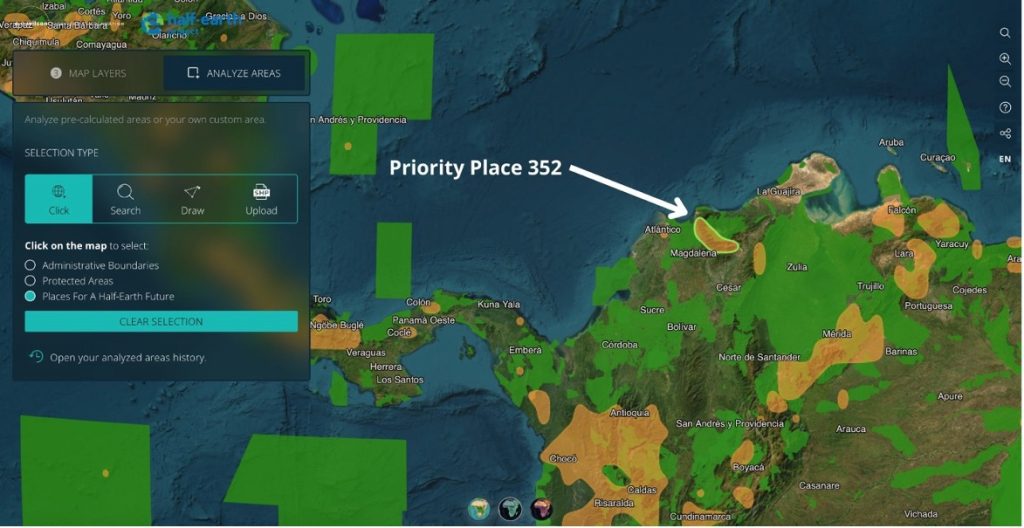Bird Conservation in Colombia
The tropical forests of Chocó, Colombia, are dense and alive. A place where mist often hangs in the air, softening the vibrant green hues around you and giving the forest a mystical quality. Towering trees are covered in moss, vines, and a cascade of epiphytes, such as orchids and bromeliads, and moisture hangs densely in the air, filling your lungs with the earthy scent of wet soil and fresh vegetation. Birdsong echoes everywhere as species like parrots, toucans, and the occasional cock-of-the-rock call from the canopy. In the background, you’ll find a layered chorus of insects buzzing, frogs croaking, and leaves rustling as small animals scurry through the undergrowth. The jungle floor is soft and often muddy, making each step a slow negotiation with roots, fallen leaves, and thick mud patches and reminding you of this area’s abundant rainfall. This ecosystem feels as ancient as it is dynamic, and being in its midst reminds you of nature’s intricacies, mysteries, and power.
Colombia is quite possibly the most biodiverse country on the planet. This may seem like hyperbole, but it might be true. Housing a stunning variety of ecosystems and species, Colombia boasts a unique geography, spanning the Amazon rainforest, the Andes Mountains, the Caribbean, and the Pacific coastlines, as well as savannas, wetlands, and deserts, and supporting a rich tapestry of life.
Looking purely at vertebrate species (that science has described), see how the number of species in Colombia compares to similar-sized countries on the National Report Cards on the Half-Earth Project Map. (See image)


Colombia is a birdwatcher’s paradise, with at least 1,735 species recorded on the Half-Earth Project Map, 64 of which are endemic—the highest diversity of bird species on the planet. From the striking Andean condor and colorful parrots to tiny hummingbirds and toucans, birds thrive in Colombia’s forests, wetlands, and coasts.
One area that is particularly rich in birds is the Chocó. The Chocó is a biologically rich and ecologically significant region that spans Colombia’s Pacific coast, parts of Panama, and northwestern Ecuador. This means there is a place for many bird species with different needs. Coastal mangroves, riverbanks, wetlands, and dense primary rainforests create niches for species adapted to specific conditions. The rainforests here, among the wettest in the world, support a high diversity of insects and fruiting plants, providing abundant food for frugivores (fruit-eating birds) and insectivores. The undergrowth, canopy, and emergent layers all support different species, contributing to the high level of biodiversity.


Looking at the Places for a Half-Earth Future layer on the Half-Earth Project Map (where we have utilized the most current species data to highlight important places for biodiversity conservation), numerous Priority Places underline the importance of effective conservation in this region. Priority Place 349 gives a detailed picture of the birds that call this area of the Chocó home, listing 932 species expected to be found there and more to be identified yearly.
The richness of birds in Colombia is neither new to its citizens, nor to the passionate individuals and organizations that work tirelessly to preserve them. Sara Inés Lara, the Executive Director and Co-founder of Fundación ProAves, has been working to save Colombia’s threatened and endangered species for more than 20 years. Her organization’s mission is to protect birds and biodiversity in Colombia through research, specific conservation actions, and outreach to the community.
It all started in 1999—when 81 surviving individuals of the Yellow-eared parrot (Ognorhynchus icterotis – once an abundant species across the Colombian Andes) remained. See image to the right of a Yellow-eared parrot. Photo credit: Marina Maytin Maduro


Sara and her team quickly realized that one of the major issues was the destruction and disappearance of the Quindo wax palm (Ceroxylon quindiuense), which the parrots rely on for nesting and food. The parrots were also incredibly trusting of people, leaving them vulnerable and easy targets for hunters. Sara’s team got to work with local communities and authorities to outlaw hunting and then engaged with the local Catholic church to find an alternative to the thousands of palm trees being cut down each Easter as part of Palm Sunday processions, a custom in Colombia. Within a few years, the centuries-old tradition changed to palm seedlings, which are now proudly carried in pots and later planted to support the recovery of the local parrot.
All of this, in conjunction with establishing a nature reserve dedicated to conserving the Yellow-eared parrot and restoring its habitat, led the area’s population to grow to over 3,000 individuals in a recent survey.
This model of alliances and collaboration with different organizations, groups, and citizens at the local and regional levels has fostered the establishment of 27 ProAves nature reserves, protecting more than 28,000 hectares of varying habitat types. Many of these reserves focus on the conservation of endangered and threatened species that lack sufficient protection and overlap with the Places for a Half-Earth Future layer on the Half-Earth Project Map.
Working alongside her daughter Isabella Cortes Lara, Sara is also the President and Co-founder of another Colombian nonprofit organization, Women for Conservation (W4C). The organization works with local and rural women to raise awareness about protecting the region’s endangered species and habitats, directly supporting the active involvement of rural women in biodiversity conservation. Its community-based initiatives, which concentrate on communities surrounding the ProAves nature reserves, focus on providing more opportunities through trainings that facilitate involvement as nature guides and park rangers, as well as the production of sustainably sourced crafts and products. W4C uses a Population, Health, and Environment (PHE) and One Health framework by providing family planning services, and empowering individuals, particularly women, by giving them greater control over their reproductive health and choices. Studies show that communities with access to education, health care, and reproductive choices are more likely to engage in sustainable practices. This empowerment often leads to more active roles in conservation, with communities prioritizing biodiversity and sustainable resource use.


From the hot and humid jungles of the Chocó to the north, between the snow-capped peaks of Colombia’s Sierra Nevada de Santa Marta mountains, the El Dorado Nature Reserve is a haven for biodiversity and one of the most significant birding hotspots in the world. It lies within the Places for a Half-Earth Future Priority Place 352. (Click on the hyperlink to discover what species live there and which are in the greatest need of additional protection.)


Established by Fundación ProAves to protect the region’s rich and often endangered flora and fauna, El Dorado sits high in the mountains, encompassing diverse habitats that range from humid tropical forests to cloud forests and the rare páramo-like shrublands at its highest points. Initially established to protect and restore the habitat of the endemic Santa Marta parakeet (Pyrrhura viridicata), the reserve is now a center for ecotourism, with its magnificent views and hub for birders from all over the globe.


Understanding the draw of this unique area, W4C engages with the surrounding communities to develop the skills needed to support the sustainable management of the local biodiversity and all that the forest provides. W4C provides training to local youth in ecotourism, with the goal of preparing them for jobs as bird and nature guides. The training program underscores a broader vision: the empowerment of local and indigenous communities to continue serving as stewards of their ancestral lands. By equipping these young individuals with the skills and knowledge to participate in a sustainable ecotourism industry, W4C is planting seeds for a future where economic empowerment and environmental stewardship go hand in hand.
Places for a Half-Earth Future Series: If you or your organization has an idea for a story like this or a question, please contact Brooks Bonner, Program Director of the Half-Earth Project at the E.O. Wilson Biodiversity Foundation, at bbonner@eowilsonfoundation.org.

